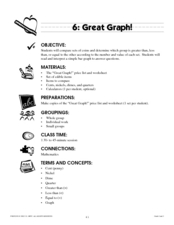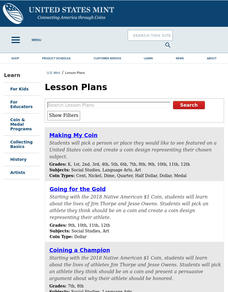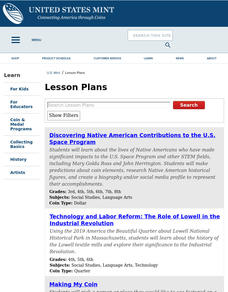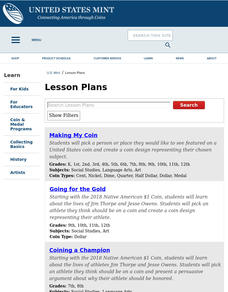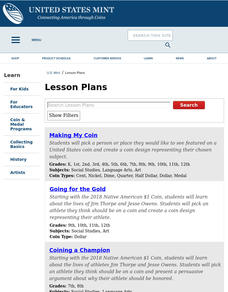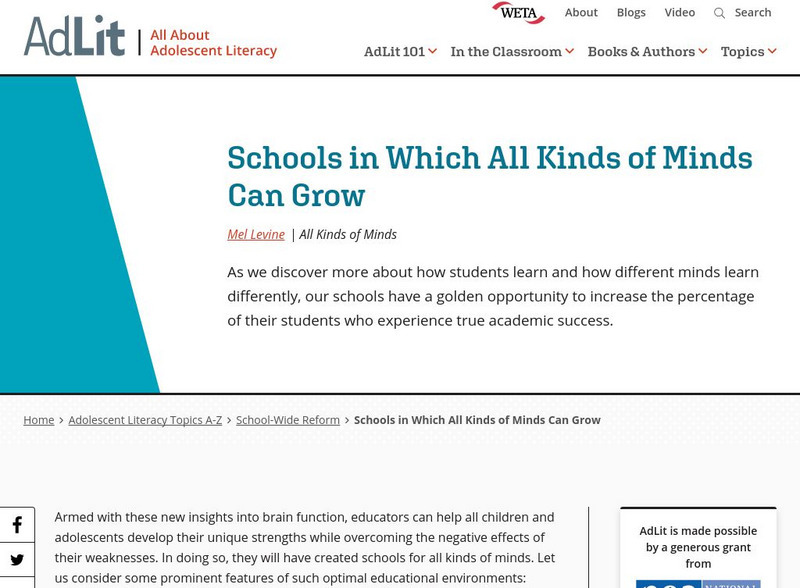Odell Education
Plant and Animal Cells
Incorporate multiple facets of the cell into your next high school lab! Through an introduction to cell organelles, class members observe each cell type and draw visuals to further demonstrate understanding of cellular processes in both...
Virginia Department of Education
Cell Division
Searching for simple ways to teach mitosis to high schoolers? Using colored chalk and onion root tips, pupils visually demonstrate what they view when looking through the lens of a microscope. There are also various ways to expand the...
Virginia Department of Education
Chemical Bonds
How are chemical bonds similar and how are they different? Provide your young chemists with the resources to more thoroughly understand the concepts of ionic and covalent bonds. Pupils research these topics, diagram examples of each...
Nazareth College
Creative Writing
Students discuss creative writing—what makes something creative writing? Each learner starts writing a story and after 15 minutes, they pass their story to another who adds to it. After another 15 minutes of writing, the story is passed...
Curated OER
Great Graph!
Here is a fantastic lesson counting coins, interpreting graphs, and the concept of "greater than" and "less than." Young mathematicians utilize worksheets embedded in the plan in order to practice these concepts. The worksheets are...
New Hampshire Bureau of Adult Education
Dystopian Literature: from Fiction to Fact
Imagine an entire course devoted to dystopian literature. If that concept appeals to you, check out this course that uses 1984 as the anchor text and includes classic short stories as well.
New York State Education Department
TASC Transition Curriculum: Workshop 2
Flipped classrooms and online tools killed the chalkboard! An awesome, hands-on technology workshop asks teachers across all content areas. to examine model lessons, become familiar with research, and explore tech tools they can...
Curated OER
A Mass of Pennies
Learners estimate and determine the number of cents (pennies) that are needed to equal the mass of a variety of common objects. They develop a process for measuring and explore concepts related to units of measurement.
Curated OER
Charting History With Pennies
Young scholars collect pennies and sort them in ascending order of dates. For the year on each penny, students research key events in history and pick a single event, explaining its historical significance. Then young scholars use these...
Curated OER
Using Informational Books: Index, Table of Contents & Alphabetical Order
Students recall and use previous knowledge of the library's reference and nonfiction sections. Also they utilize various forms of reference (encyclopedias & dictionaries) and nonfiction books.
Curated OER
Substance Abuse
Learners describe the effects of drugs on the human body, both short-and long-term consequences. They create personal approaches to substance abuse control and prevention. Students demonstrate effective practices in working within...
Curated OER
Commemorative Coin Poetry
Students discuss and research an individual or event that has been memorialized on a commemorative coin. They use the information they found to write acrostics, creating stand-up accordion books to display the poems.
Curated OER
How Much for Your Name?
Pupils create different coin combinations for a single amount, practice counting, demonstrate their knowledge of the value of coins and demonstrate their knowledge of coin combinations.
Curated OER
Counting by 10s, 5s, and 1s
Learners practice counting by 10s, 5s, and 1s in order to prepare for counting and adding the values of coins.
Curated OER
Making Cents
Students play a game in which they create monetary amounts using different coin combinations.
Curated OER
Matching Pairs
Learners take turns matching the appropriate shapes (listing coin values) to those with numerical values listed on them. When students are successful, they win a blank shape for their collection.
Curated OER
Are You Money Smart?
Learners figure out and discuss the irony of this coin-centric poem. They also practice persuasive letter writing, and identify and count coin/money values.
Curated OER
Do You Have a Coin Collection?
Learners create a graph showing which students in the class collect coins.
Curated OER
Do You Like to Spend or Save?
Students, after briefly discussing spending and saving habits, take a poll to see how their peers like to manage money. Then students graph their findings and discuss the survey results.
Curated OER
Coin-Shaped Books
Students review United States coins throughout history, and create shape books for their favorite coins. Each book contains text and illustrations created by Students.
Curated OER
Repetitive Song Form
Eighth graders discover different concepts for identifying musical structure and song form. In this Music History lesson, 8th graders compare and contrast a Red Hot Chili Peppers song to an Andrea Bocelli's song.
HotChalk
Hot Chalk: Lesson Plans Page: Differentiated Learning Egyptian Project
This wonderful lesson plan allows the students to choose their method of assessment. At the end of the Egyptian unit, the students wrap all the knowledge they have learned into a project.
Other
Byrdseed: The Differentiator
An interactive planning tool for teachers to develop differentiated lessons based on the revised Bloom's Taxonomy. Choose a thinking skill, then the type of content, the resources that will be used, the product students will produce, and...
AdLit
Ad lit.org: Schools in Which All Kinds of Minds Can Grow
As we discover more about how students learn and how different minds learn differently, our schools have a golden opportunity to increase the percentage of their students who experience true academic success.






